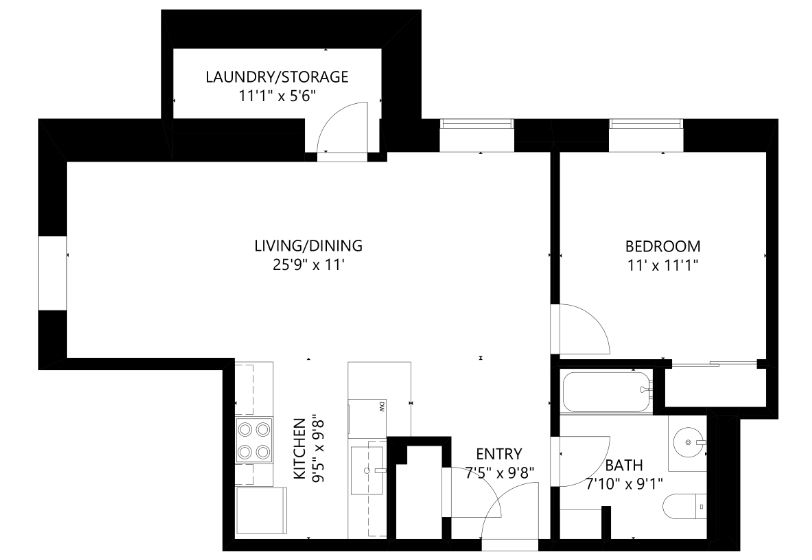2D FLOOR PLANS ARE BEST FOR:
- Real Estate Listings
- Property Marketing
- Energy and Home and Appraisals
- Home and Interior Design
- Home Remodels and Renovations
- Office, Flooring, and Property Layouts
- Commercial Spaces
A 2D floor plan gives you a logical diagram of your asset format. Combine only the internal design or represent the entire asset format. Common wet areas, for example, toilets are shown in blue.
In addition, add furniture to indicate furniture designs or leave your floor plan blank. A 2D floor plan is incredible for land postings and risk home improvement. For example, home rebuilding and redesign with black and white floor plan.
The high-contrast 2D floor plan has a perfect, proficient look. Therefore, these types of floor plans are ideal for internal structure proposals, home and vitality assessments, and structural and user license applications. Combine images, content, and names to represent applicable data, e.g. real estate direction, area, equipment area, and that’s just the tip of the iceberg. Colored floor plan
Besides, make shaded floors plan with area colors and ground materials include color division, room color, content shade. Change your 2D decks intending to coordinate your type of pledge or mark also. With over 30 adjustable settings, it can make anything else but it’s hard to do the type of 2D floor plan you need. Create a 2D floor plan profile, so you get a similar view without fail.
7 STEPS TO CREATING A 2D FLOOR PLAN TO SCALE FOR ANY SPACE:
Regardless of whether you are using paper, pencil and chart paper to allow you to scale or an online program to plan your floor, there are some basic advances and things going into formation of a strong outline:
1. List prerequisites: Make a careful list of the needs and needs of the individuals who will consume the space.
2. Measure: Make sure you have the right estimates, so you may need to evaluate twice. What to quantify:
- External partitions or impressions of your space, any entrance or walkway, and window.
- The divider is from side to side and from floor to roof.
- Where various electrical sockets, switches, and controls are found.
- Fixed apparatus: any component highlights, including chimneys, sections, racks, seats and a number of other underground highlights.
- Space around and outside or in the common elements of these things, and then find each of your arrangements.
- Objects that will be inside the space.
3. Scale: Floor plans must be outlined proportionally, which means reducing the size of your illustration so that the entire space can fit on a bit of paper or screen. A typical ratio is 1/4 inch = 1 foot. This equivalent scale must be connected with items such as furniture or display counters that will be included in the floor plan.
4. Think about the vision: What do you stand, sit or do you want to see? Consider windows, entrances, divider and what’s good for the reasons you expect for space.
5. Render it: In light of the considerable number of segments, compose your floor plan.
6. Evaluate: Demand survey and needs list. Evaluate space game plans including breaking the flow. Different components combine usable, secure, and open space. More and more adaptive here about evaluating space arrangements and planning in private spaces.
7. Share: Team up and have someone investigate your floor intending to provide input to double-check your reasons and plans.

